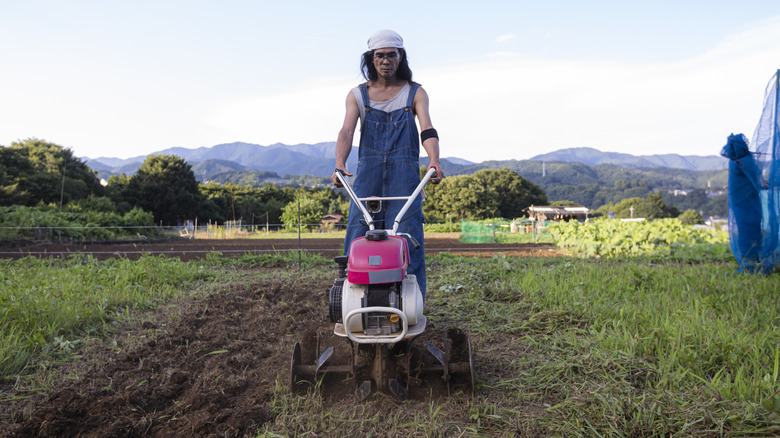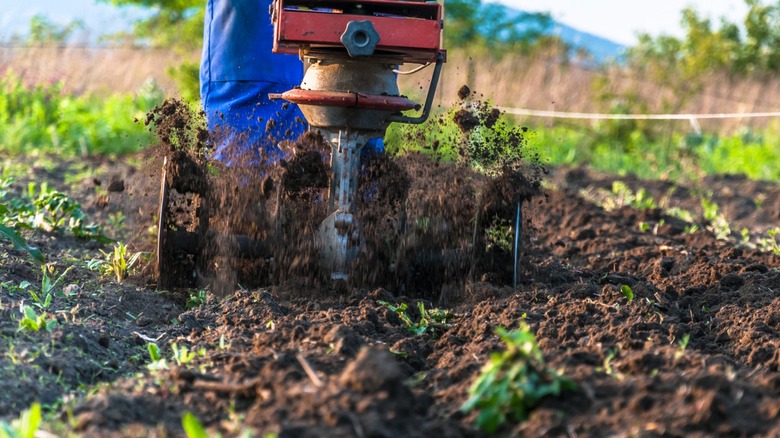A Small Garden Tiller Is The Weeding Tool You Didn't Know You Needed
Whether you're breaking ground on a new plot to start a garden or need to clear weeds out of an existing garden bed, weeding is a year-round chore for gardeners. It's certainly not as fun as planning your plot, starting seeds, and harvesting the fruits of your labor. But weeding is a key component of a healthy, abundant garden. Weeds will vie for water, nutrients, and other resources your vegetables need to grow. They can also harbor unwanted pests, release growth inhibitors into the soil, and are all around unsightly. Fortunately, there are many ways to control and remove weeds. With all the tools and methods to choose from, it's understandable that you might have overlooked using a front-tine tiller to get rid of weeds in your garden.
A front-tine tiller has hard metal blades in the front, which make it easy to use and move in any direction. The blades tear up weeds of all sizes, destroying their root systems and breaking the weeds down into the soil. Tillers are very helpful when it comes to upending large weeds because the blades rip them out of the ground and up to the surface so you can evict them completely. For most weeds, you'll want to till them before they go to seed so they don't continue to invade your garden, especially if they're perennial weeds. Weeds have an advantage because they can grow in compact soil, whereas vegetables need well-drained, nutrient-loaded, and aerated soil to thrive. Front-tine tilling the compact soil will not only remove the weeds but also break up the ground and help you prepare the soil for planting.
Tilling to clear weeds and prep the ground
Using tillers for gardening and clearing weeds will spare you an enormous amount of physical labor and time compared to manually tilling or hand-pulling weeds. Prepare the area you want to till by clearing the rocks and cutting the weeds as low as you can with a weed eater or mower. This prevents debris from jamming up in your blades. Before purchasing a garden tiller, you'll need to determine how hard the ground that you'll be tilling is. Gas-powered front-tine tillers are more powerful and work well for hard, weedy, compacted soil. Electrical-powered tillers have less power and are more suitable for lightly compacted soil or mixing organic matter into the soil. Once you're ready to till, operate the machine according to the user manual and let it propel you forward. Expect for it to be a little bumpy as you are turning up the soil and breaking down weeds. After you're done tilling, go through and remove any weeds you don't want to be left behind.
You'll want to avoid tilling in the spring if the ground is still wet. The soil needs time to dry from winter. You're in the clear if the soil doesn't stick to your boots. However, if you till while the ground is still wet, it will likely compact the soil, defeating your efforts. Tilling the ground has a bit of a mixed reputation. You don't want to till too often or deep into the dirt to avoid disturbing the vital microorganisms that nourish the soil. As an alternative to tilling, you can create a no-till garden. But front-tine tilling is useful for preparing the ground for new garden beds and removing stubborn weeds.

